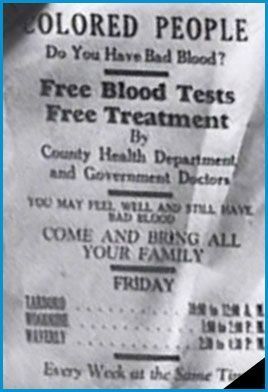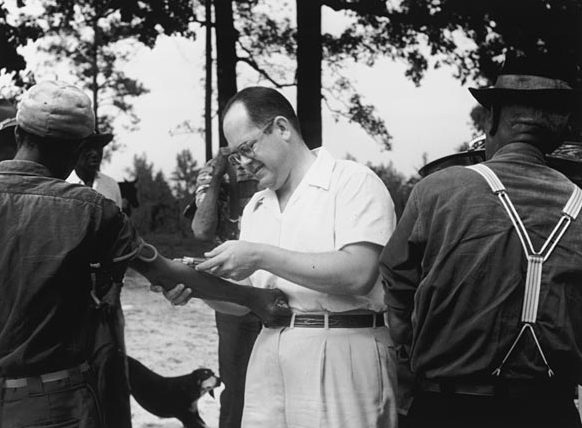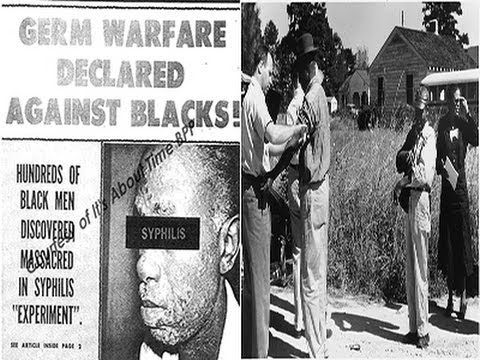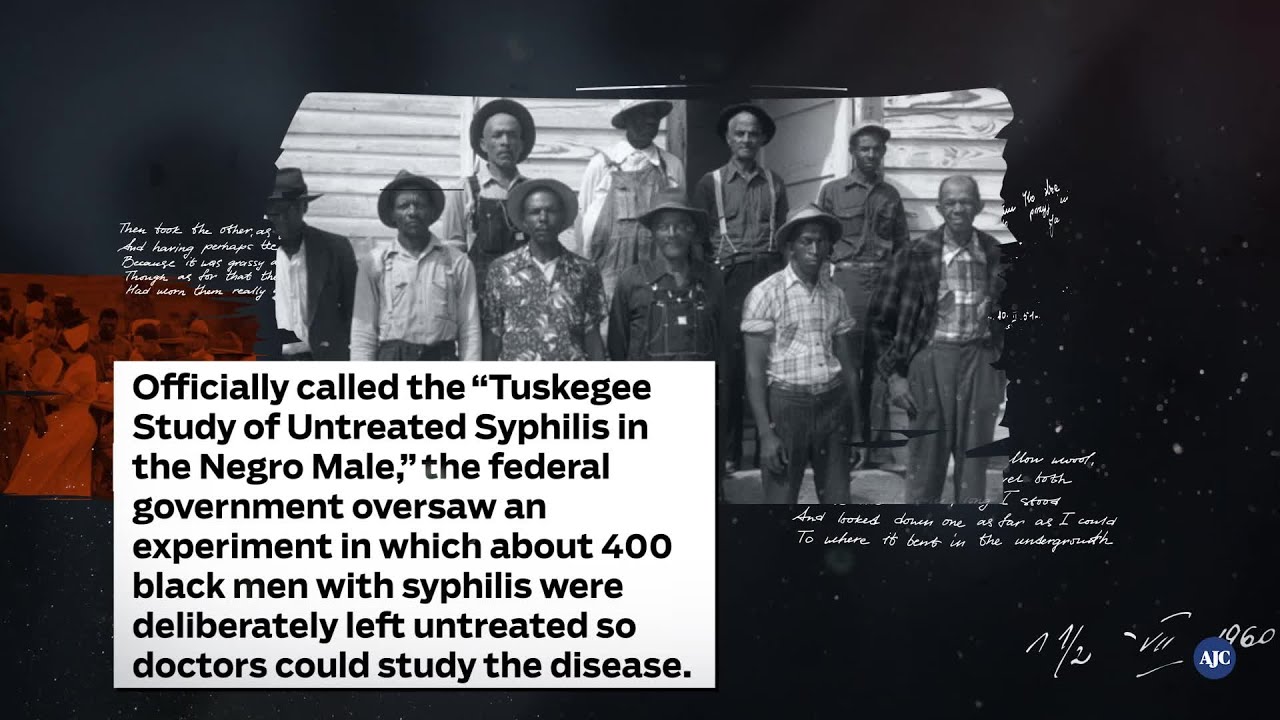The Tuskegee Syphilis Study
The Tuskegee Syphilis Study is one of the least known facts today in the state of Alabama, and if you ask the younger generation, they have never heard of about it.
However, to the people that went through this horrible experience, it was very, very real, and demonstrated the racism and scientific arrogance that uses human subjects in the fields of health and scientific investigation.
In fact, when the PHS researchers, better known by the name the USPHS Syphilis Study, published their reports or gave lectures at medical meetings, there were several physicians that began to question the ethics of this horrible human experiment.
However, there concerns were quickly brushed aside by the doctors in charge of the PHS, who would assert that what they were doing was critical to the public health not only of the State of Alabama, but the country.
There were several other concerns about this study as time passed, and these too were brushed aside.
What makes these studies even more egregious, and shocking was the fact that when the Nazi experiments on prisoners in Germany during World War Two were exposed and fully denounced, the Tuskegee Syphilis Study continued unquestioned.
 Flyer About the Tuskegee Syphilis Study
Flyer About the Tuskegee Syphilis StudyThe History of the Tuskegee Syphilis Study
The history of the Tuskegee Syphilis Study starts in the year 1932 and ran until 1972, when the United States Government sponsored the nation’s largest running public health experiment in and around the Tuskegee area, which was located in Macon County, Alabama.
Under financial constraints that were imposed by the Great Depression, the U.S. Public Health Services, (PHS), discontinued a successful program to document and treat syphilis in the rural African American population.
Instead, they replaced it with a study that centered on the effects of untreated, late-stage syphilis in African American Men.
This study shifted gears in what is today known as the “Black Belt” region of the state of Alabama, because of its rich soil, and where a vast number of Black sharecroppers lived at the time, and the research itself took place at the Tuskegee Institute.
The entire intent of this horrible study was to record the natural history of syphilis in Blacks, and the official name of this study was the “Tuskegee Study of Untreated Syphilis in the Negro Male”.
When this study was started, there were no proven treatments for this threatening disease, and the Researchers told the men participating in the study, that they were to be treated for “bad blood” instead.
This term was well known during this time frame in the area by the local people, and was used to describe a host of ailments that included anemia, fatigue, as well as syphilis.
There was a total of 600 men enrolled in the original study, and of this group, about 400 of them actually had the venereal disease, and the other 200 men were test subjects.
Most all of the men that participated were very poor illiterate sharecroppers, and they were offered what most Blacks at the time could only dream of; medical care and survivors insurance.
They were further enticed to enroll in the study with other incentives that included medical exams, rides to and from the clinics, free meals on their examination days, and free treatments for minor ailments.
They were also given guarantees that provisions would be made if they died during these tests, in terms of burial stipends paid to their survivors.
However, there was one glaring fact that was withheld from them; there NO treatments when the study began.
When penicillin did become the standard treatment for this disease in the year 1947, the medicine was with-held as part of the treatment for both the experimental group, as well as the control group.
It was this decision by the PHS that would later have this study compared to the Nazi experiments on prisoners in Germany.
 Pictures of the Tuskegee Syphilis Study
Pictures of the Tuskegee Syphilis StudyWhat Made the Tuskegee Syphilis Study So Bad?
The Tuskegee Syphilis Study was considered a horrible experiment of these poor illiterate sharecroppers for several reasons, but the most obvious was the disease itself.
Syphilis is a venereal disease that is caused by a microscopic spirochete, which is a type of bacteria, and is transmitted through sexual contact, or from mother to children at birth.
During it most infectious early stages, sores will begin to appear, which are referred to as “chancres”.
In the second stage, people affected with this horrible disease will then begin to experience very painful rashes, sores, and intense swelling.
If the disease if left untreated, it goes into a third stage, which is referred to as the non-infectious late stage and does not go away; instead in can and does lay dormant for years or even decades, only to attack again.
It can then cause major complications that will affect critical organs like the heart or the brain in as estimated two-thirds of all known cases.
Once this occurs, it can and does quickly lead to debility, insanity, or even death.
When the Tuskegee Syphilis Study first started, the men that actually suffered from this horrible disease were treated with a combination of heavy metals.
These metals included neo-arsephenamine, bismuth, and mercury in individualized regimes, which lasted about a year.
These studies in the urban clinics by the PHS appeared to suggest differences in both the nature and extent among Whites and African Americans, although there was absolutely no biological basis for the differences.
Numerous physicians assumed, without proof, that Whites with this disease were more likely to suffer neurological symptoms, and the Blacks were likely to suffer cardiovascular complications.
 Facts About the Tuskegee Syphilis Study
Facts About the Tuskegee Syphilis StudyHowever, it was later discovered that these assumptions of biological differences between Whites and Blacks were heavily influenced during the Jim Crow Era.
For those that have forgotten or the young people that may have never heard about the Jim Crow Era, it was a time where several acts on the federal, state, and local levels, barred African Americans from being full America citizens.
In the decades that followed, the study began to take on a life of its own.
There were literally generations of PHS doctors that came through Tuskegee to examine the men and to participate in the study.
The Alabama and Eunice Rivers and Dr. Walter Edmondson’s Macon County health departments turned a blind eye on the study’s violations of state law requiring the reporting and treatment of venereal disease, but the study was never as invisible as they wanted.
Between the years 1936 and 1973, several of the researchers published more than 13 reports in numerous medical journals in which the men, referred to as “volunteers”, continued to die.
The statistics of these findings provided a very clear message; if this disease was left untreated, these “volunteers” had shorted lives, and many died as a result.
However, even with these findings, this study was allowed to continue.
In fact, during World War II, PHS, with the help of the Macon County health officer Dr. Murray Smith, made sure that NONE of the study’s subjects were drafted.
If they had been drafted, the disease would have been detected and properly treated.
 More Facts About the Tuskegee Syphilis Study
More Facts About the Tuskegee Syphilis StudyHow and why the Tuskegee Syphilis Study Ended
The Tuskegee Syphilis Study began to unravel on July 25, 1972, when Jean Heller of the Associated Press, broke the story the appeared at the same time in both New York and Washington.
This story highlighted a 40-year-old nontherapeutic experiment called a “study” on the effects of untested syphilis on Black men in the rural south.
It also highlighted that at the between start of the “study” in 1932 and 1947, the date when penicillin was determined to be a cure for the disease, that dozens of men had died and their wives, children, and untold number of others, had become infected as a result.
This immediately set into motion an international outcry and a series of actions that were initiated by the U.S. Federal Agencies, and as a result, set up a panel to investigate.
This panel was made up of members in the fields of health administration, medicine, law, religion, and education.
While the panel concluded that the men in the study participated freely b agreeing to the examinations and treatments, the evidence that scientific research protocol routinely applied to human subjects was either ignored, or deeply flawed.
It also said that specifically the men were never told about or offered the research procedure called “informed consent”.
They said the researchers had not informed the men of the actual name of the study, i.e. “The Tuskegee Study of Untreated Syphilis in the Negro Male,” as well as its true purpose and the potential consequences of the non-treatment they would receive.
They also contended with proof, that these men never knew of the debilitation and life-threatening consequences they were to experience, and the impact this would have on their wives, girlfriends, and the children that would be involved.
The panel also concluded that there were no choices given to the participants to quit the study when penicillin became available as a treatment and a cure for the disease.
After reviewing the results of their research, the panel quickly concluded that the study was “ethically unjustified” in October of 1972, and one month later, the Assistant Secretary for Health and Scientific Affairs, declared an official end to the Tuskegee Syphilis Study.
Within a year, there was a class-action lawsuit filed, which ended in a settlement giving more than 9 million dollars to the study participants.
This study is now taught as a major example in bioethics courses on how “NOT TO” conduct research and was fictionalized in the HBO movie “Miss Evers’ Boys”.
An outcome of the federal apology was the creation of the National Center for Bioethics at Tuskegee University, and a formal apology to the program’s unwitting participants by President Bill Clinton in 1997.
References
The Best Kept Secrets In Alabama

Alabama Gift Store
Numerous Items for You and Your Family to Enjoy
See it here at the Gift Store
Copyright 2019-2023 Alabamabackroads.com
All Rights Reserved



















